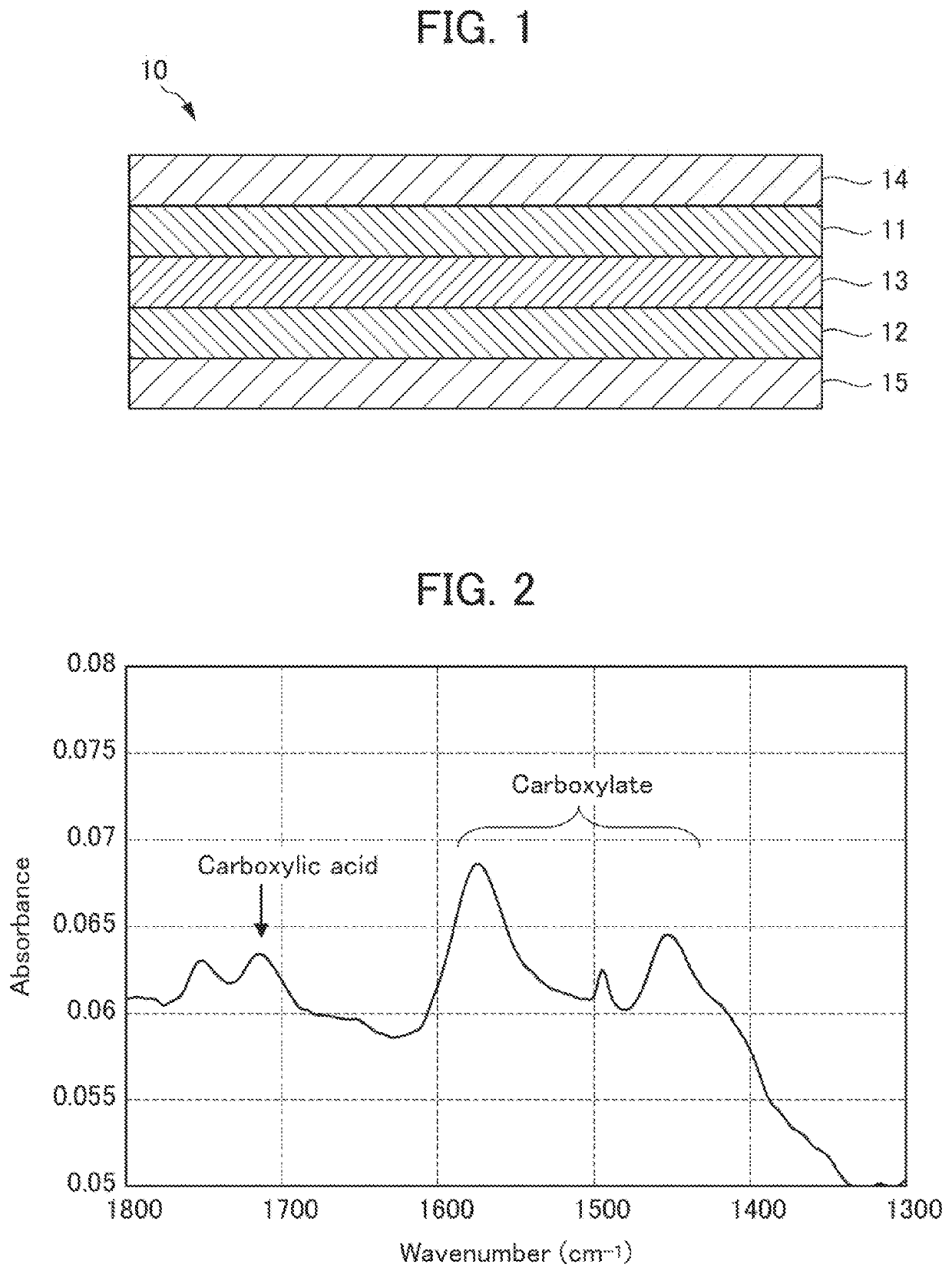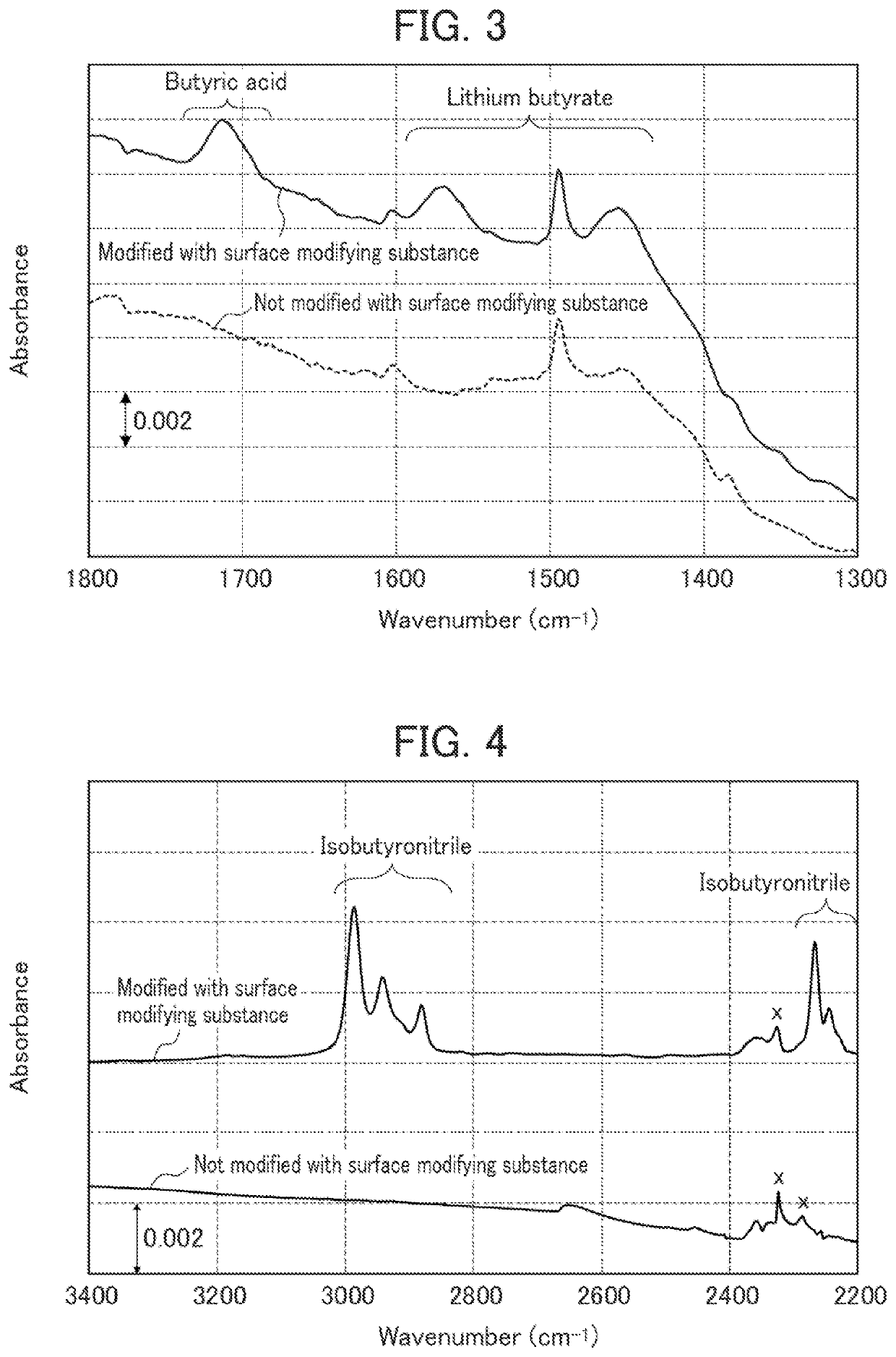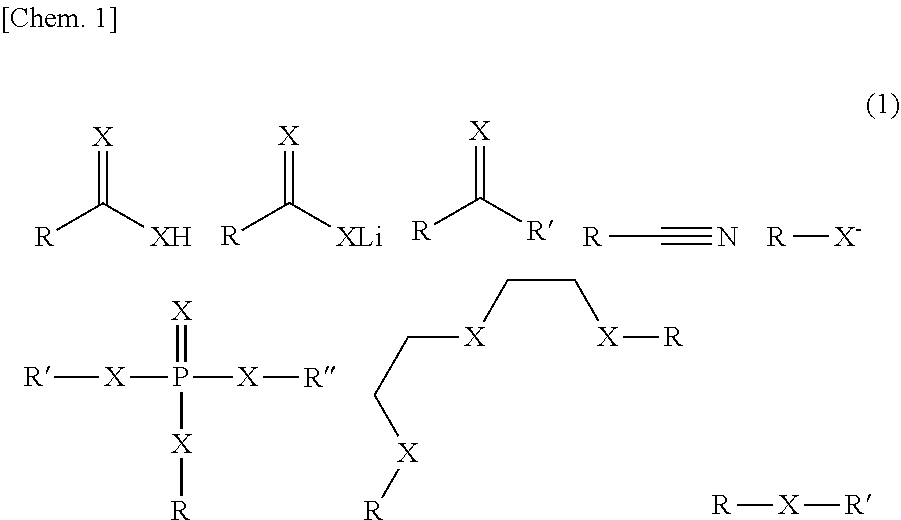Electrode for solid-state battery and solid-state battery including same
a solid-state battery and electrode technology, applied in the manufacture of final products, cell components, secondary cell details, etc., can solve the problems that the slurry in which each is uniformly mixed is not easily obtained by kneading, and achieve the effects of reducing electrode resistance, battery performance and durability, and not easily decomposing
- Summary
- Abstract
- Description
- Claims
- Application Information
AI Technical Summary
Benefits of technology
Problems solved by technology
Method used
Image
Examples
example 1
[Production of Solid Electrolyte]
[0088]Modification with butyric acid (A-1): In a glove box filled with argon gas, 0.02 grams (0.2% by mass) of butyric acid was dissolved in 20 grams of butyl butyrate (water concentration <20 ppm). To this solution, 10 grams of Li—P—S—Cl system solid electrolyte was mixed. After mixing for 12 hours, the butyl butyrate solvent was removed under reduced pressure to obtain a solid electrolyte having a surface that had been modified with butyric acid in accordance with Example 1.
[0089]FIG. 2 is a chart showing an IR spectrum of the solid electrolyte of Example 1. As shown in FIG. 2, in the IR spectrum, peaks of carboxylic acid and carboxylate were detected, demonstrating that the surface of the solid electrolyte was modified with carboxylic acid and carboxylate.
[0090][Production of Positive Electrode]
[0091]As a positive electrode active material, 7.0 grams of lithium cobaltate having a surface coated with LiNbO3 was used, and 3.0 grams of a solid electr...
example 2
[0098]A positive electrode half-cell and a negative electrode half-cell according to Example 2 were produced in the same manner as in Example 1 except that 0.02 grams of lithium butyrate was used instead of 0.02 grams of butyric acid in formation of a solid electrolyte.
example 3
[0099]A positive electrode half-cell and a negative electrode half-cell according to Example 3 were prepared in the same manner as in Example 1 except that 0.02 g of isobutyric acid was used instead of 0.02 g of butyric acid and hexane was used as a solvent in formation of a solid electrolyte.
PUM
| Property | Measurement | Unit |
|---|---|---|
| Li ion conductivity | aaaaa | aaaaa |
| Li ion conductivity | aaaaa | aaaaa |
| boiling point | aaaaa | aaaaa |
Abstract
Description
Claims
Application Information
 Login to View More
Login to View More - R&D
- Intellectual Property
- Life Sciences
- Materials
- Tech Scout
- Unparalleled Data Quality
- Higher Quality Content
- 60% Fewer Hallucinations
Browse by: Latest US Patents, China's latest patents, Technical Efficacy Thesaurus, Application Domain, Technology Topic, Popular Technical Reports.
© 2025 PatSnap. All rights reserved.Legal|Privacy policy|Modern Slavery Act Transparency Statement|Sitemap|About US| Contact US: help@patsnap.com



